-
Services
-
The exhibition booth of Exertus Oy from Seinäjoki drew a steady stream of visitors at this year’s Bauma trade fair in Munich, as the manufacturer of control systems for mobile machinery introduced itself to potential customers. According to Sami Takaneva, Exertus’ Head of Marketing and Communications, the attention the company received at the world’s largest construction machinery trade fair was many times greater than in previous years. This was partly due to the booth’s renewed appearance.
“Updating the company logo and all marketing communications was a worthwhile investment. Clarifying the brand supports our growth leap in international markets,” Takaneva says.
Exertus develops and provides control systems, as well as related software and components, for sectors such as earthmoving, mining, forestry, and specialty vehicles. Their solutions include vehicle control, hydraulic management, user interfaces, and machine safety systems.
“An intelligent control system is the brain of a machine. Our solutions are suited to applications where reliable performance, durability, and ease of integration are essential.”
Exertus’ customer base includes both domestic and international machinery manufacturers. One such client is Normet, with whom Exertus has developed control solutions for underground vehicles and spraying equipment.
In consumer markets, a company’s brand is everything—but according to Takaneva, it is also crucial for an industrial subcontractor.
“For us, the Exertus brand is a symbol of trust and credibility. Our products and services are often part of customers’ critical systems, where quality and performance are of utmost importance. When a customer sees the Exertus name on a device or software, it signals a safe, tested, and reliable solution,” Takaneva explains.
As part of the brand renewal, the company registered the Exertus® trademark in its key markets. In addition, Exertus uses product-specific brand names, which are protected as necessary.
“Trademark protection helps prevent misuse of our name without permission or with compromised quality.”
Takaneva notes that protecting trademarks also supports long-term customer relationships, as it ensures continuity and a consistently developing product range.
“The value of the Exertus brand doesn’t come just from visibility—it stems from its ongoing representation of quality and expertise.”
In managing trademarks, Exertus works closely with Laine IP.
Exertus brings a business-driven perspective to trademark management—what the company wants to protect, why, and in which markets. Laine IP, in turn, acts as an expert partner in both strategic planning and practical execution.
“Laine IP is responsible for tasks such as drafting applications, handling official procedures, and monitoring and enforcement,” Takaneva says.
He emphasizes that the collaboration is built on continuous dialogue.
“Laine IP brings the legal expertise. We define the commercial goals. The division of work functions well—allowing us to focus on product and brand development, while Laine IP ensures protection is carried out effectively and correctly.”
According to Takaneva, a successful partnership with an IP law firm is based above all on trust, expertise, and an understanding of business needs.
“It’s important to us that our IPR partner can look at things not only from a legal but also a strategic perspective: what’s worth protecting, to what extent, and in which regions. A good partner also dares to ask questions, suggest solutions, and challenge when needed.”
Takaneva expects the IP law firm to communicate clearly, respond quickly, and translate even complex legal matters into business-relevant insights.
“Laine IP has met these expectations excellently. Their expertise and experience are evident in how smoothly and proactively they operate in various situations—whether it’s trademarks, contracts, or international protection.”
“This kind of partnership provides peace of mind and lets us focus on our core competencies. We know our IPR matters are in good hands,” Takaneva emphasizes.
In addition to trademarks, Exertus has carefully considered the protection of other intellectual property rights. The goal of the company’s IPR strategy is to safeguard both its own and its customers’ competitiveness—and ensure that developed solutions retain their value well into the future.
“Our key IPR concerns involve copyrights related to software and electronic design, as well as trademark protection. In terms of patents, we mainly focus on customer-specific solutions, where ownership of innovations is defined on a project basis.”
“We also have proprietary technology, the uniqueness of which we protect either through technical means, such as closed software architectures, or—when needed—via formal IPR methods.”
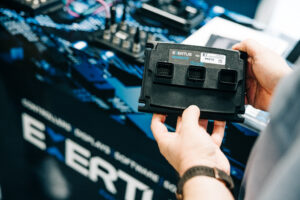
Exertus, part of the Swedish Dacke Industri Group, has an annual turnover of around 10 million euros. The Ostrobothnia region is home to many similarly innovative technology companies. According to Takaneva, businesses operating in international markets have already recognized the importance of IPR matters quite well.
“Still, there’s untapped potential.”
Takaneva has observed that the benefits of trademarks and other IPR rights are often viewed too narrowly—limited to technical protection or legal obligations. IPRs may not yet be seen as strategic tools for brand building, market positioning, or securing customer relationships.
“For companies like Exertus, this offers an opportunity to share expertise and raise awareness of how IPR protection can genuinely support growth and internationalization in a cost-effective and sustainable way.”
Text: Matti Remes
Photos: Exertus Oy
The 2025 edition of the IAM Patent 1000 Guide has now been published. The Guide includes recommended patent law firms and a listing of 1000 standout patent practitioners from across the globe.
We are pleased to share that Laine IP has maintained a Silver ranking and been provided with excellent reviews in the Patent Prosecution category: “Laine IP stands as one of the best patent agencies in Finland, specialising in top-tier patent prosecution work.” “Direct, swift and efficient”, its team is a favoured choice among local start-ups and major conglomerates alike.
Several individuals received recognition in the guide. On the electronics and ICT side, Managing Director and European Patent Attorney, Jouni Smolander; as well as EPA Jarkko Tiilikainen and EPA and US patent agent Toimi Teelahti were named as Recommended Practitioners.



Within our Chemistry team, European patent attorneys, Kaisa Suominen, Hanna Laurén, and Kathy Wasström, as well as our U.S. patent attorney Mark Scott were named as Recommended Practitioners.
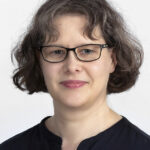



A link to Laine IP’s page within the 2025 IAM 1000 Guide can be found here.
We sincerely appreciate our clients’ continued trust in our firm and their feedback in IAM’s selection process.
Typically, upon allowance of a patent application, a patent applicant receives a Notice of Allowance setting a 3-month deadline (with no extensions of time available) to pay an Issue Fee to proceed to patent grant. Following payment of the Issue Fee, the USPTO mails an Issue Notification notifying the applicant of the exact date of issue of the subject patent (US patents always issue on a Tuesday).
This shortening of time to patent issuance has been made possible by the USPTO’s move to electronic grants (eGrants) (first introduced in April 2023). An eGrant is an official electronic version of a granted U.S. patent, which replaced paper-based versions as the official version. An eGrant is readily accessible by the public through the USPTO’s Patent Center interface and can be downloaded any number of times.
Although there remains time between the payment of the Issue Fee and transmittal of the Issue Notification, and time between the Issue Notification and Issue Date, the total time period time between payment of the Issue Fee and the Issue Date can now be even shorter.
Thus, we recommend that all decisions regarding any continuing applications (divisional, continuation, or continuation-in-part applications) be made by the time the Issue Fee is paid and that any continuing applications be filed before the next Tuesday following payment of the Issue Fee to ensure copendency of the application (of the issuing patent) and any continuing applications.
If you have any questions, please do not hesitate to contact a member of Laine IP’s US IP Team. Thank you.
The growth of Paptic, a developer of materials that replace plastic, is supported by a carefully built IPR portfolio. In matters of patents and trademarks, Laine IP has been a key partner for the company since its inception.
At Sokos and Stockmann, customers’ clothing purchases are packed not in plastic or paper bags, but in shopping bags made of a material that feels soft and textile-like. These are made using a Finnish manufacturing method developed by Paptic, which produces durable, strong, and recyclable packaging materials as alternatives to plastic.
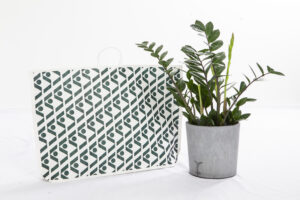
Esa Torniainen, Paptic’s Chief Development Officer and one of its founders, says that Paptic material combines the best qualities of paper, plastic, and fabric. The innovation, based on development work done at VTT Technical Research Centre of Finland, enables the production of fiber-based products from softwood pulp in a way that conserves both energy and water.
“There are two parts to the Paptic innovation. The first is the recipe—an innovative combination of raw materials that results in a functional and recyclable material. The second part is foam-forming technology. It’s not yet in use, but we’re preparing to scale it,” says Torniainen.
Currently, Paptic’s materials are produced by three contract manufacturers in Europe, using traditional papermaking technology along with Paptic’s recipes and expertise.
In addition to shopping bags, Paptic’s materials are used to package food products, cosmetics, and consumer electronics. They’re also used for packaging toys, leather goods, and tools.
Torniainen emphasizes that Paptic is not a single product, but a family of products designed for different applications. The company aims to comprehensively protect its manufacturing technology and products to ensure freedom to operate in international markets. Strong IPR protection is also crucial for enabling future licensing of the technology to other manufacturers.
“We seek patents and trademarks in a broad and global manner. Of course, we always carefully evaluate what kind of protection is reasonable and cost-effective,” says Torniainen.

Currently, Paptic has nearly 10 patent families for its products and production methods. In addition to registering the Paptic name as a trademark, the company has trademarked the names of each of its four product families. It has also applied for trademarks for products not yet on the market.
“When it comes to IPR, it’s essential to understand what and where to protect. But it’s at least as important to consider how we should go about protecting things. In these discussions, we place great value on Laine IP’s strong expertise,” says Torniainen.
Laine IP became Paptic’s IPR partner when the company was founded in 2015.
Torniainen believes that for a startup, it’s crucial to find a reliable partner for patents and trademarks—one who is ready to start building cooperation even when the business is still in its early stages.
“An IPR partner must also believe in the startup’s potential. We value the fact that Laine IP has taken the time to thoroughly understand our innovations and our business.”
Torniainen expects more than just technical patent application writing and trademark registration from a patent office. He has come to appreciate Laine IP’s strategic and consultative approach.
“Patents and trademarks are not just about protecting technology and products; they’re also a major part of business development. A good IPR partner dares to challenge us and offer their own suggestions. That’s valuable to us, as we are innovators, not IPR experts.”
According to Torniainen, a credible and well-constructed IPR portfolio and strategy are becoming increasingly important for Paptic as the company grows. They are of interest not only to investors, but also to larger clients looking for long-term partnerships.
“A carefully considered IPR strategy is also important for us internally. It supports us as we steer the business and develop new solutions.”
Torniainen notes that one of the key challenges for a startup is constant change. That’s why the IPR strategy, patents, and trademarks must be designed not only for current protection, but also to meet future needs.
Paptic’s growth is driven by a global megatrend seeking alternatives to plastic. In many countries, for example, the use of plastic bags is restricted, and there is a move toward packaging made from renewable materials.
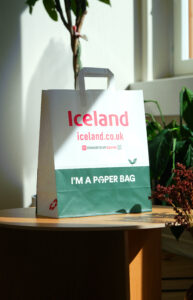
Paptic’s solution first gained traction in shopping bags. In addition to Sokos and Stockmann, reusable bags made from Paptic’s material have been tested at a few K-Supermarkets in Finland. The bags are also used by Luhta and by Moomin Characters, known for Moomin products, which is also a shareholder in Paptic.
Among international customers, one of the largest is the UK retail chain Iceland. According to Torniainen, Paptic’s main focus is on international markets, which already account for the majority of the company’s revenue—€7 million in 2023.
Text: Matti Remes
Photos: Paptic Oy
The Managing IP Awards is the legal industry’s most extensive and highly regarded awards programme for IP law firms. It spans multiple areas of IP practice and includes over 50 jurisdictions. Each year, our research analysts gather insights from thousands of firms, IP professionals, and their clients through interviews and surveys.
The winners of the 2025 MIP EMEA Awards were celebrated at a gala in London on 10 April 2025, marking the event’s 20th anniversary. We are delighted to announce that Laine IP has once again been named Firm of the Year in the Trademark Prosecution category for Finland. This prestigious recognition highlights Laine IP’s top-tier expertise in intellectual property and our commitment to delivering high-quality client service.
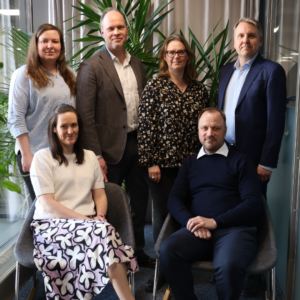
Trademark Team: Jemina, Joose, Annika, Tom-Erik, Emma ja Reijo
In addition, European Patent Attorney Kathy Wasström has been awarded the Practitioner of the Year title. This is a fantastic acknowledgment of Kathy’s professionalism and dedicated work in the IP field. Kathy travelled to London to accept the award and shared her thoughts on the experience:
“I’m grateful for the opportunity to represent our company at such an incredible event. The whole evening was amazing, and the atmosphere was absolutely electric. But the best part was meeting all the familiar faces and making new connections.”

Kathy on the red carpet.
We warmly congratulate Kathy and our trademark team, as well as all the other companies and professionals recognised at the event. We also extend our sincere thanks to everyone who provided recommendations for the research process. These awards are highly appreciated and highlight our experts’ uncompromising and skilled work in the ever-evolving IP landscape. We’re excited to move forward from here!
Stay up to date on the latest IPR news and updates by subscribing to the Laine IP newsletter.
Unified Patent Court (UPC) has published its first annual report. UPC started its operation on June 1, 2023, and hence year 2024 was the first calendar during which UPC has operated. The UPC system simplifies patenting in Europe such that it is possible to request for unitary effect for a granted European patent in the countries, which have ratified the Agreement on a Unified Patent Court (UPCA). A European patent with unitary effect may also be referred to as a Unitary Patent (UP).
In the 1st annual report of the UPC, the President of the Court of Appeal of the UPC, Klaus Grabinski raises for example the following:
“Almost 50 years after the signing of the EPC, it is the UPC that now makes it possible to enforce a European patent across borders, in one court common to all those EU Member States that have ratified the Agreement on a Unified Patent Court (UPC Member States), completing the European patent system and bringing to fruition many years of effort.”
According to Grabinski, the UPC has been busy right from the start and as of December 2024, 663 actions had been filed in total. On the other hand, almost 550 000 European patents have been opted out from the jurisdiction of the UPC, out of which the largest part (about 470 000) before the UPC started its operation though.
In addition, the UPCA entered into force in Romania on September 1, 2024. It is therefore now possible to request for unitary effect for a granted European patent in 18 countries, which have ratified the UPCA.
We will continue to actively monitor the situation and continue to report on developments.
If you need more information regarding UPC, your Laine EP representative and our UPC specialist team (upc@laineip.fi) will be happy to answer your questions.
The original news can be found from here.
Managing IP has announced the nominees for the EMEA Awards 2025.
The Managing IP Awards programme recognises remarkable intellectual property achievements and developments in the last year.
Laine IP has been shortlisted in both the “Patent Prosecution” and “Trademark Prosecution” categories. Additionally, European Patent Attorney Kathy Wasström has received an impressive nomination for “Practitioner of the Year.”
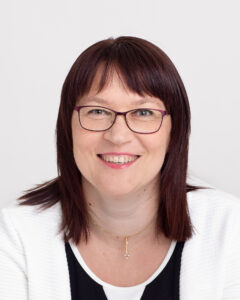
The winners of the MIP EMEA Awards 2025 will be announced at the awards ceremony in London on April 10, 2025, marking the event’s 20th edition.
We warmly congratulate all the shortlisted companies and professionals. Laine IP’s recognition is a result of hard work and commitment to handling our clients’ intellectual property rights with top-tier expertise in the ever-evolving IP field.
👉 Read more and view all nominees here
🔹 Follow us on social media for the latest updates on IP and Laine IP’s news!
After reading the patent claims, someone interested in the invention may wonder, “How can this be put into practice?” The description of the patent will help you find the answer!
The purpose of the description is to provide the necessary support for the patent claims to enable the invention to be used. The description contains a short and a descriptive title for the invention, and a general and specific part describing the invention.
The general part describes the field of the invention and the prior art related to the invention, how the invention solves or improves upon the disadvantages of the prior art, and the means necessary to achieve this. The prior art may be presented, for example, by reference to earlier patent publications, although it is advisable to make as few references as possible to facilitate prosecution.
In the specific part, the invention is described in detail by means of embodiments and possibly by reference to drawings. For example, if the invention is a new type of lawnmower blade, the structure and function of the blade should be described in sufficient detail to enable a person skilled in the art to reproduce the blade and to understand its advantages over the prior art. It is not necessary to include all the details, such as the dimensions of the bolts used to secure the blade, if the advantages of the invention do not relate to them and are obvious to the person skilled in the art.
If the description includes a drawing, it is recommended to include a list of all the figures in the drawing as an introduction to a specific part of the description.
Examples are necessary when the means for carrying out the invention and the advantages achieved over the prior art are not obvious from the described function or structure of the invention alone. For example, if a patent application alleges that a lawnmower blade according to the invention stays sharper for longer, an example of an experimental arrangement can be presented, in which a reference blade and a blade according to the invention are used for a certain period of time in conditions that similar to actual lawnmowing. Finally, the example may refer to a microscope image or a graph accompanying the drawings illustrating the difference in sharpness between the two blades after the experiment.
In patent applications, examples play an important role not only in demonstrating the differences between the prior art and the invention, but also in proving that the invention can be carried out. The lack of examples is particularly problematic in patent applications related to chemistry. The structural formula of a chemical compound can easily be set out in a patent claim, but if the person skilled in the art cannot make the compound on the basis of the description, invention is not sufficiently disclosed. Where a general structure for a group of compounds is claimed, it is beneficial to provide a wide range of examples of the preparation and the effects of compounds belonging to that group to credibly demonstrate the utility of the invention within the full scope of the claim.
Sometimes, the Office examiner may raise concerns about the sufficiency of the disclosure if the description has left doubt as to the applicability of the invention within the full scope of the patent claim. Although added subject matter cannot be introduced to the patent application, additional examples may be submitted to most offices to support the findings already presented in the description. Some deficiencies in the description may be difficult or even impossible to remedy after the filing of the patent application. Therefore, careful preparation of the patent application by a professional will help to ensure that your invention is successfully protected.
Any questions? Do not hesitate to contact our experts – we’re here to help you!
We are pleased to share that two of our colleagues, Thomas Öhman and Adam Herrala Bricker, have successfully passed the USPTO registration examination. Congratulations to Thomas and Adam! Laine IP now has four registered U.S. patent practitioners, further strengthening our ability to support clients with U.S. patent filings and patent prosecution. We also welcome Benjamin Finley as a trainee. Benjamin’s ICT experience will further augment the team’s capabilities.
These milestones reflect Laine IP’s ongoing commitment ensuring that our clients receive the highest level of support in navigating the complexities of U.S. patent law. Further, as Thomas and Adam are both located in Turku, Finland, we now have a wide set of services available via our Turku office: Expertise in European patents, Trademarks, and U.S. patent prosecution.
Having joined Laine in late 2023, Thomas has been a valuable part of our U.S. IP team, contributing with his expertise in chemistry-related technologies. As a U.S. patent agent, Thomas is well-positioned to assist clients in securing patent rights in the U.S.A. Thomas is able to provide services in Swedish, Finnish and English.

” I’m pleased that Laine has two new registered U.S patent agents. This broadens our firm’s expertise in several industries. Additionally, I’m happy to collaborate closely with Mark, Adam and Toimi to further develop our U.S. patent prosecution services.”
Learn more about Thomas here
On the non-chemical front, Adam has demonstrated strong technical and legal skills during his time with us, especially when working on AI inventions. Adam joined us in August 2024 from his previous position as a postdoctoral researcher at the University of Turku.

“Doubling the number of registered practitioners is a real achievement for the U.S. team. It significantly expands our capabilities, allowing us to provide our clients with faster, more personalized service, as well as broadening the overall knowledgebase of the team.”
Learn more about Adam here
To prepare the patent application, a meeting is scheduled where the features of the invention and the protection objectives are discussed together with the client. The invention must be new and not obvious to a skilled person in the field. Therefore, the patent application must be filed before the invention is publicly disclosed, for example, on websites, at trade fairs, or when the first products are sent to customers. No new matter can be added to the application during the application process, so it is important to ensure that the invention is described as accurately and in as much detail as possible when drafting the application.
The patent application includes several parts:
It is advisable to use the assistance of a patent attorney who is familiar with the patent field and the preparation of patent applications, as a professionally and carefully drafted application has better chances of success.
Once the patent application is complete, it is filed, meaning it is submitted to the patent office for examination. The application first undergoes a formal examination to ensure that all necessary documents are included and the filing fee has been paid.
Following this, the patent office examines the patentability of the invention, i.e., whether the invention is new, involves an inventive step and is industrially applicable, and ensures that the description and patent claims meet the patent legislation.
If the requirements for patenting are met and there are no obstacles to the acceptance of the application, the patent office will grant the patent. If the basic requirements for patenting are not met or there are other objections to the grant of the patent, the patent office will issue an office action requesting corrections. In these cases, the applicant has the opportunity to, within the given deadline, make amendments to the patent application, for example, by amending the patent claims, and/or submit arguments for novelty and inventive step. Any amendments must be based on the application as filed.
Once the applicant has submitted the response to the office action, the patent office will review the submitted documents. After that, the patent office has the option to grant the patent, submit a new office action, or submit a decision of refusal. Typically, the patent office issues 1 to 3 office actions before grant or refusal of the patent.
The patent application is published 18 months after the filing date. With this publication, others are able to access and review the application.
After the examination of the patent application and any office actions, the patent office makes a final decision on the grant or refusal of the patent. If the invention meets all the requirements for patentability, the patent is granted. After the grant, the patent holder has the right to exclude others from using the patented invention without permission.
If the patent office refuses the patent and you do not agree with the decision, you can file an appeal.
Patents are generally country-specific, and the exclusive rights apply only in the countries where the patent holder has a valid patent. Usually, after the first application, i.e., the priority application, it may be necessary to extend the patent protection to other countries. The invention may also have undergone improvements or modifications as a result of further development that were not included in the priority application. Consequently, subsequent applications can be filed, and it is advisable to file them within 12 months of the filing date of the priority application so that the subsequent applications share the same filing date and any publications that may have occurred in the meantime do not prevent the patent from being granted. If this 12-month period has passed and the invention has not been published otherwise, one may consider filing subsequent applications before the priority application is published.
A patent can remain in force for up to 20 years from the filing date by paying renewal fees. Depending on the country, renewal fees may need to be paid starting from the application date (usually from the second year after the application is filed) or only from the date the patent is granted onward.
Patenting is a multi-stage process and requires careful preparation and precise monitoring. Through patenting, the owner of the invention can ensure that the invention is not used by others without permission. To ensure the success of the patenting process, we recommend contacting our experts well in advance of the publication of the invention.
Any questions? Do not hesitate to contact our experts – we’re here to help you!